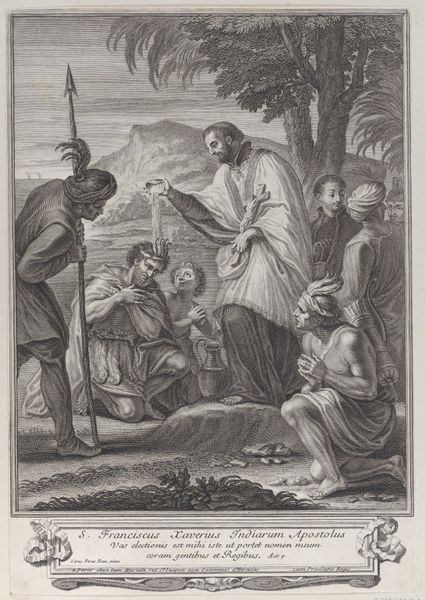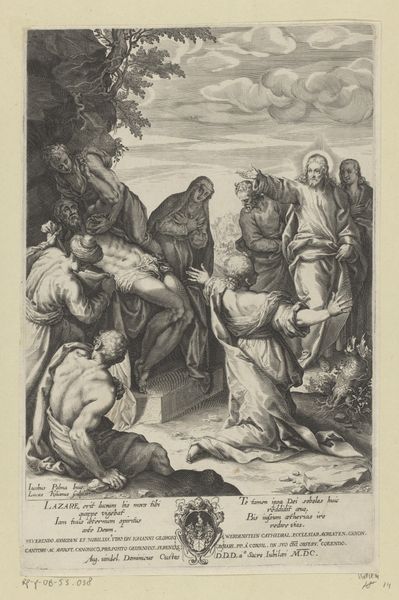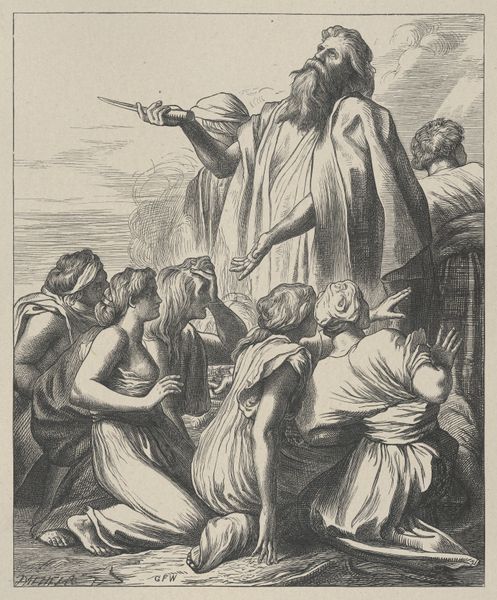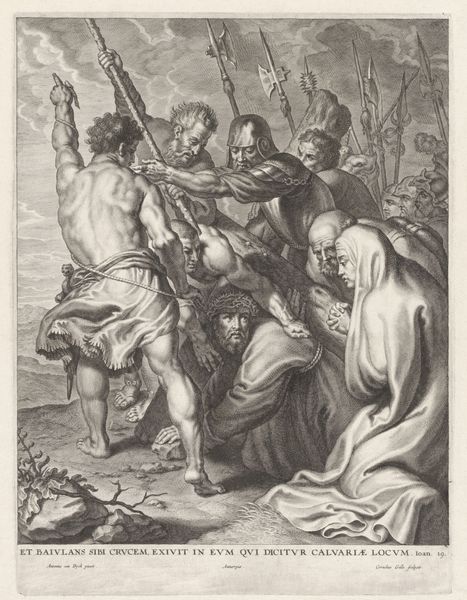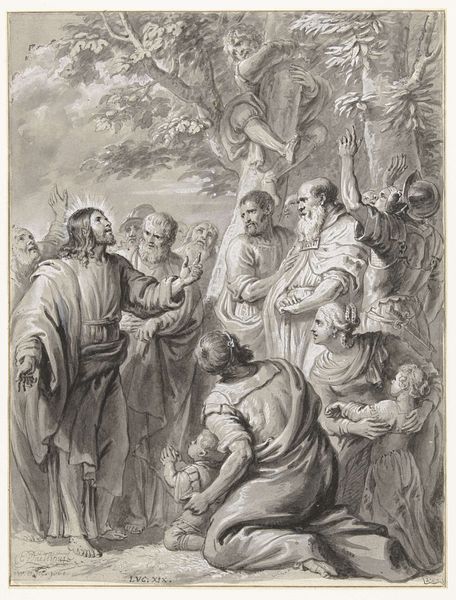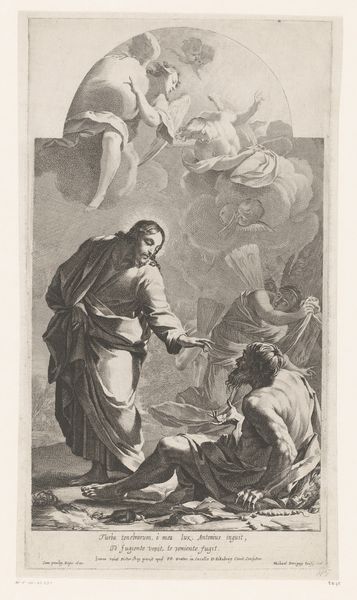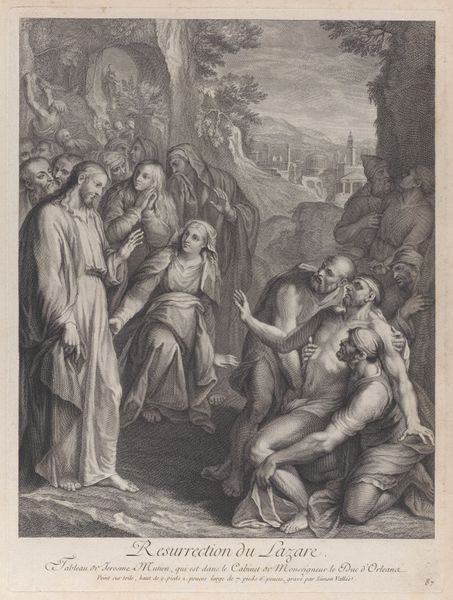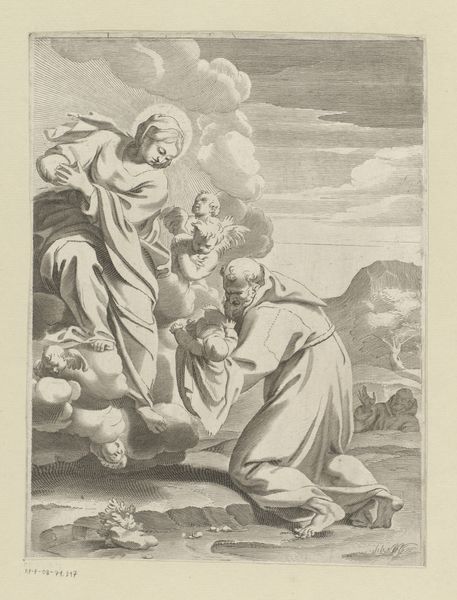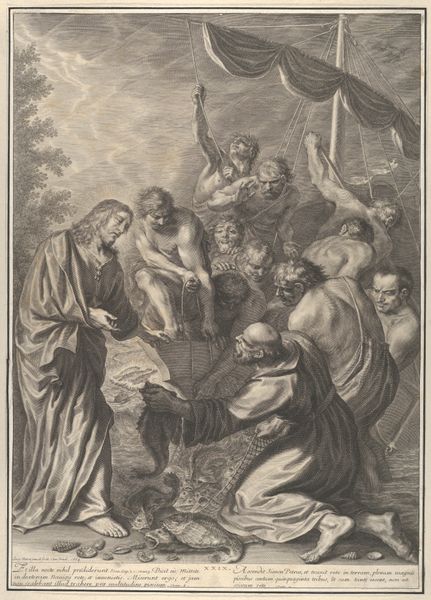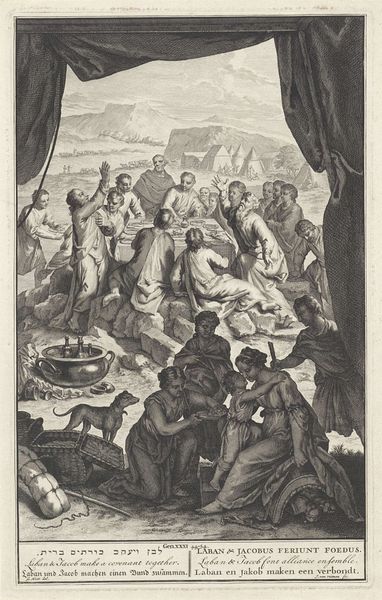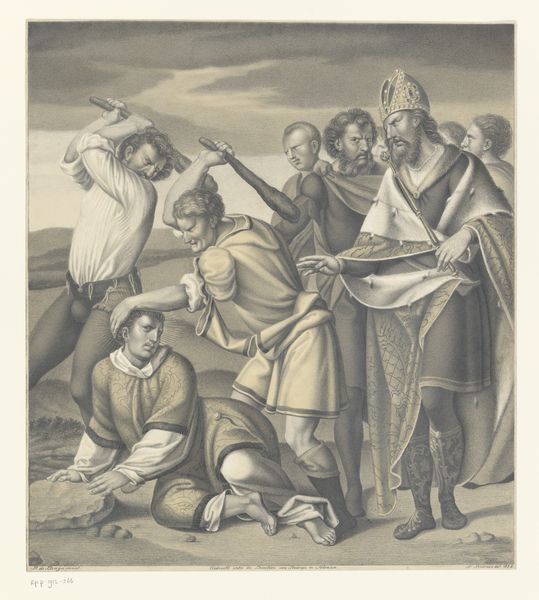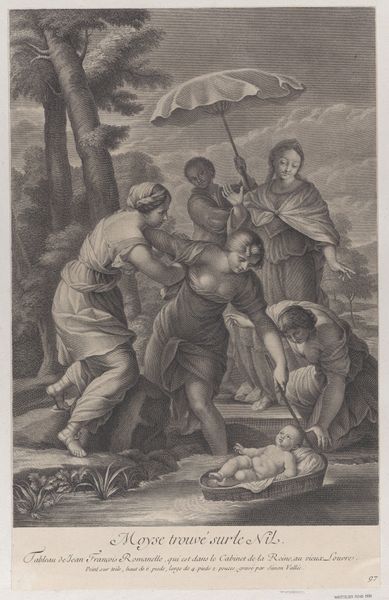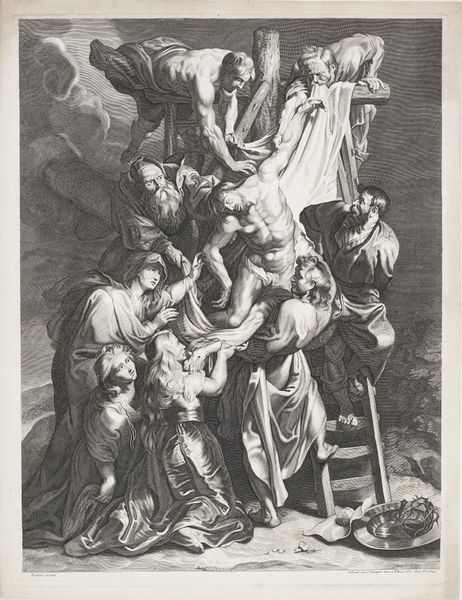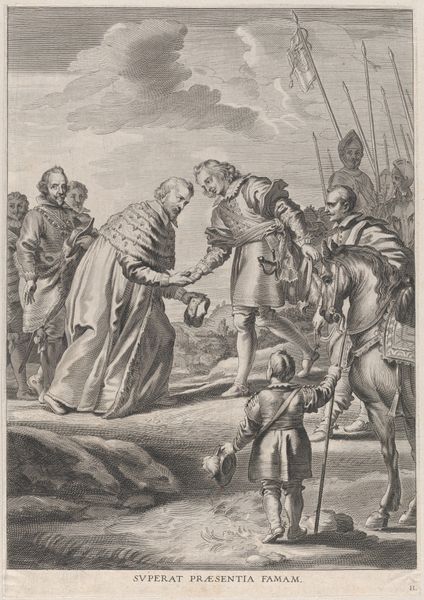
Moses striking the rock with a stick to bring forth water, while the Israelites look on in amazement 1724 - 1734
0:00
0:00
drawing, print
#
drawing
#
baroque
# print
#
figuration
#
history-painting
Dimensions: Sheet (Trimmed): 17 5/16 × 11 1/8 in. (44 × 28.2 cm)
Copyright: Public Domain
Curator: Looking at "Moses striking the rock with a stick to bring forth water, while the Israelites look on in amazement," a print made between 1724 and 1734 after a painting by Jean-Francois Romanelli, the drama really hits you first, doesn’t it? Editor: Totally! It feels like a captured moment of intense…need. Like a collective gasp held right before a drink of cool water. Everyone’s got this mix of desperate hope and like, what's gonna happen next painted all over their faces. The composition pushes all that to the front too, doesn't it? Curator: Yes, the Baroque drama is clear! These history paintings sought to create dramatic empathy, a direct emotional line. And prints like this helped to extend their audience outside elite circles. The subject, Moses drawing water from the rock, would have been well known, offering multiple layers of interpretation related to divinity, leadership, and survival. Editor: Right? You see that Moses figure, totally calm while everybody else is practically beside themselves, there is a lot going on about power dynamics there. Even just the fact that we are meant to view this grand moment in grey-scale makes me feel strange too. What do you make of this medium for such a bold image? Curator: Well, remember, printmaking offered wider circulation than painting, bringing images to those who would never step foot in royal apartments. Prints allowed the messages – in this case about faith, obedience, divine power–to permeate different parts of society, even in monochrome. Plus, a master printmaker like Haussard could leverage line to create texture and tonal variety. It may lack the immediate impact of colour, but print possesses its own subtlety and sophistication. Editor: It's weird how something can feel so big, but also so small because of the etching and line quality used. I get that contrast; that pull between monumental narrative and intimate, detailed craftsmanship is really affecting in its own way. I think that tension is what sticks with me the most. Curator: It reminds us, perhaps, how such potent narratives were both intensely visible, meant to be publically accessible and understood, but also, controlled and curated through artistic mediation, shaping the messages we see. Editor: Exactly. And sometimes it's the controlled whispers that carry the furthest. That’s how I’m taking this work in at least.
Comments
No comments
Be the first to comment and join the conversation on the ultimate creative platform.
